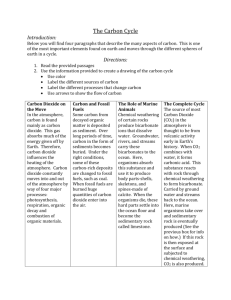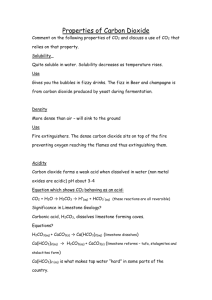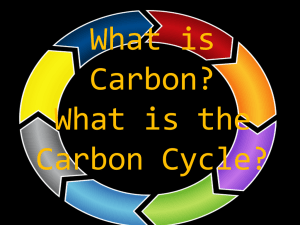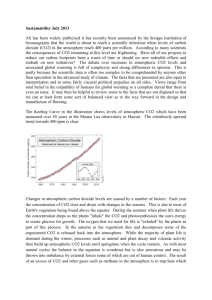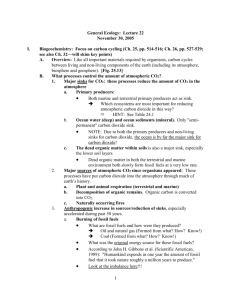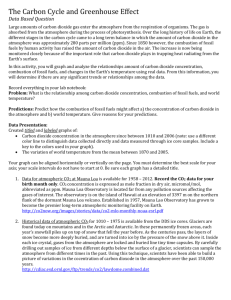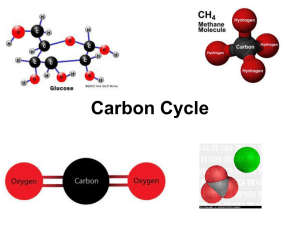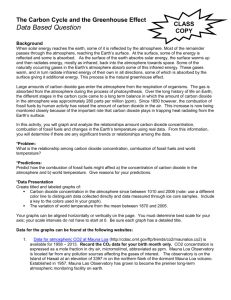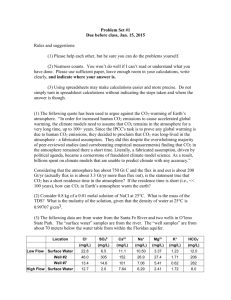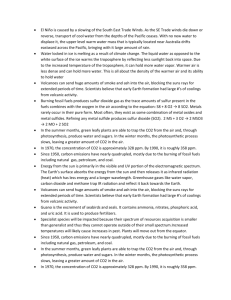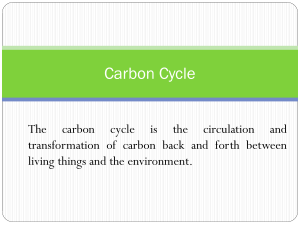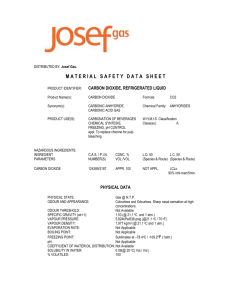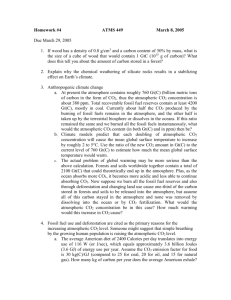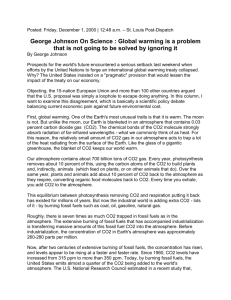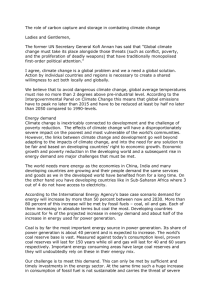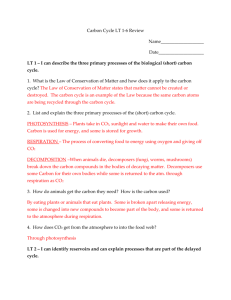p109 Carbon Cycle
advertisement
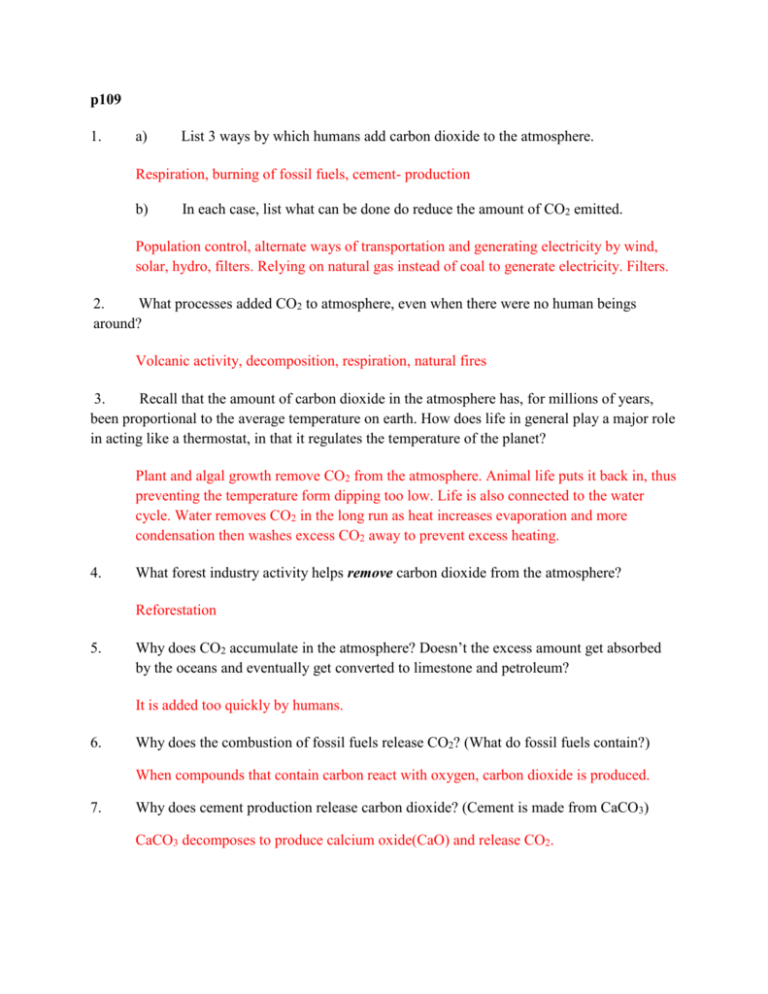
p109 1. a) List 3 ways by which humans add carbon dioxide to the atmosphere. Respiration, burning of fossil fuels, cement- production b) In each case, list what can be done do reduce the amount of CO2 emitted. Population control, alternate ways of transportation and generating electricity by wind, solar, hydro, filters. Relying on natural gas instead of coal to generate electricity. Filters. 2. What processes added CO2 to atmosphere, even when there were no human beings around? Volcanic activity, decomposition, respiration, natural fires 3. Recall that the amount of carbon dioxide in the atmosphere has, for millions of years, been proportional to the average temperature on earth. How does life in general play a major role in acting like a thermostat, in that it regulates the temperature of the planet? Plant and algal growth remove CO2 from the atmosphere. Animal life puts it back in, thus preventing the temperature form dipping too low. Life is also connected to the water cycle. Water removes CO2 in the long run as heat increases evaporation and more condensation then washes excess CO2 away to prevent excess heating. 4. What forest industry activity helps remove carbon dioxide from the atmosphere? Reforestation 5. Why does CO2 accumulate in the atmosphere? Doesn’t the excess amount get absorbed by the oceans and eventually get converted to limestone and petroleum? It is added too quickly by humans. 6. Why does the combustion of fossil fuels release CO2? (What do fossil fuels contain?) When compounds that contain carbon react with oxygen, carbon dioxide is produced. 7. Why does cement production release carbon dioxide? (Cement is made from CaCO3) CaCO3 decomposes to produce calcium oxide(CaO) and release CO2. 8. According to a hypothesis put forth by Raymo, the formation of the Himalayan mountain range million years ago caused an ice age. The newly exposed rocks from the large mountain range exposed vast amounts of calcium silicate which reacted with carbonic acid according to the following: CaSiO3 + H2CO3 H2SiO3 + CaCO3 a) Removing H2CO3 implies that a good deal of CO2 was removed from the atmosphere. See the carbon cycle diagram, and explain the connection between CO2 and H2CO3. CO2 reacts with water to produce H2CO3 which then reacts with Himalayan rock. b) Why did reduced levels of carbon dioxide spur an ice age? There was less gas to prevent heat from escaping the earth’s surface and going into space. p 113 1. List two human activities that add nitrates or ammonium to the soil. Agricultural waste and the addition of artificial fertilizer 2. List two non-human activities that add nitrates or ammonium to the soil. Lightning, volcanic activity, nitrogen-fixing bacteria 3. List three non-human activities that remove nitrates or ammonium from the soil. Denitrification, runoff, plant growth 4. Why do plants need nitrates and ammonium? To produce amino acids (for protein) DNA, ATP 5. Animals continuously excrete urea, which contains nitrogen. Animals do not eat fertilizer, so where do they get their nitrogen? From plants or other animals 6. When industry creates fertilizer, they not only participate in the nitrogen cycle but also make an undesirable contribution to the carbon cycle. How? Usually it takes energy to produce fertilizer. If that energy is released by burning fossil fuels, carbon dioxide will be released.

